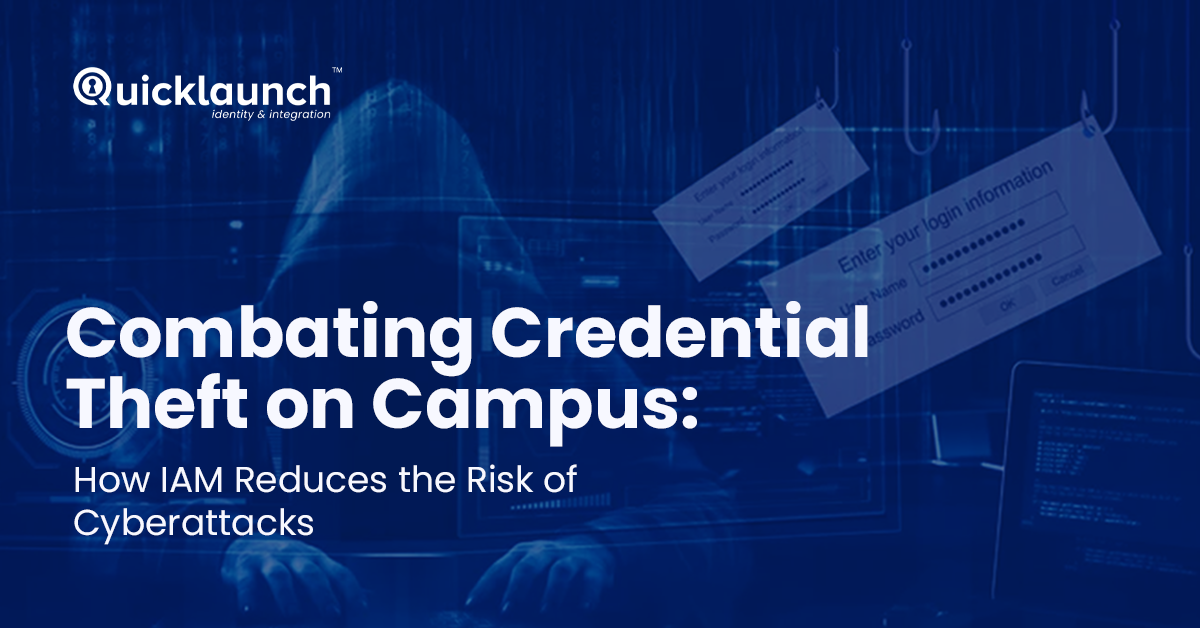Combating Credential Theft on Campus: How IAM Reduces the Risk of Cyberattacks

Managing Student Identities from Applicant to Alumni: Why Identity Lifecycle Management Matters
April 10, 2025
Modernizing IT Operations in Higher Ed: How Automation is Enabling Scalable Student Onboarding
May 21, 2025
In today’s digital-first campus environment, cybersecurity is no longer just an IT concern—it’s a campus-wide priority. With the increase in remote access, bring-your-own-device (BYOD) policies, and cloud-based learning platforms, higher education institutions are more vulnerable than ever to credential theft and identity-based cyberattacks.
According to the EDUCAUSE 2024 Top IT Issues, credential security is the #1 priority and #1 breach vector l. A 2023 report from the Verizon Data Breach Investigations Report (DBIR) also highlighted that over 80% of breaches involve stolen or weak passwords.
Why Higher Ed Is a Prime Target
Universities and colleges manage an enormous amount of sensitive data, including:
- Personally identifiable information (PII)
- Mixed user base (faculty, staff, students, and alumni)
- Financial records
- Research intellectual property (IP)
Compounding the issue is the fact that students and faculty often reuse weak passwords across multiple systems. Phishing attacks, compromised credentials, and unauthorized access are rampant—especially at the beginning of the semester when onboarding is at its peak.
Enter IAM: Identity and Access Management
Identity and Access Management (IAM) has become the backbone of a strong cybersecurity strategy for educational institutions. IAM systems manage who has access to what, when, and why—ensuring that only authorized individuals can reach institutional systems and data.
Here’s how IAM solutions directly combat credential theft:
1. Single Sign-On (SSO)
SSO allows users to log in once to securely access multiple systems (LMS, email, SIS, portals, etc.). This reduces password fatigue and lowers the chances of password reuse across platforms—two key contributors to credential theft.
2. Multi-Factor Authentication (MFA)
“Multi-factor authentication is the most effective way to protect against credential-based attacks,” says Roger Grimes, Data-Driven Defense Evangelist at KnowBe4.
3. Identity Lifecycle Management
From new students to retiring faculty, IAM automates provisioning and deprovisioning based on real-time SIS or HR data. This prevents orphaned accounts and reduces the risk of unauthorized access from inactive users.
4. Self-Service Password Management
IAM platforms should offer secure, self-service password resets and unlocks—reducing help desk tickets while ensuring stronger password policies are enforced.
5. Role-Based Access Controls (RBAC)
By assigning access based on roles (student, faculty, IT admin), IAM ensures that users only access what they need—minimizing the impact of credential misuse.
Industry Adoption Is Accelerating
Institutions that deployed full IAM solutions report a 60-75% reduction in access-related support tickets and significantly faster onboarding and offboarding times. improved audit readiness -FERPA, HIPAA, and GLBA.
Credential theft is not just a theoretical threat—it’s a daily reality on college campuses. By implementing a robust IAM strategy, higher education institutions can reduce their attack surface, improve user experience, and protect the digital identities that make their communities thrive.
As cyber threats grow more sophisticated, investing in IAM is no longer optional—it’s essential.
